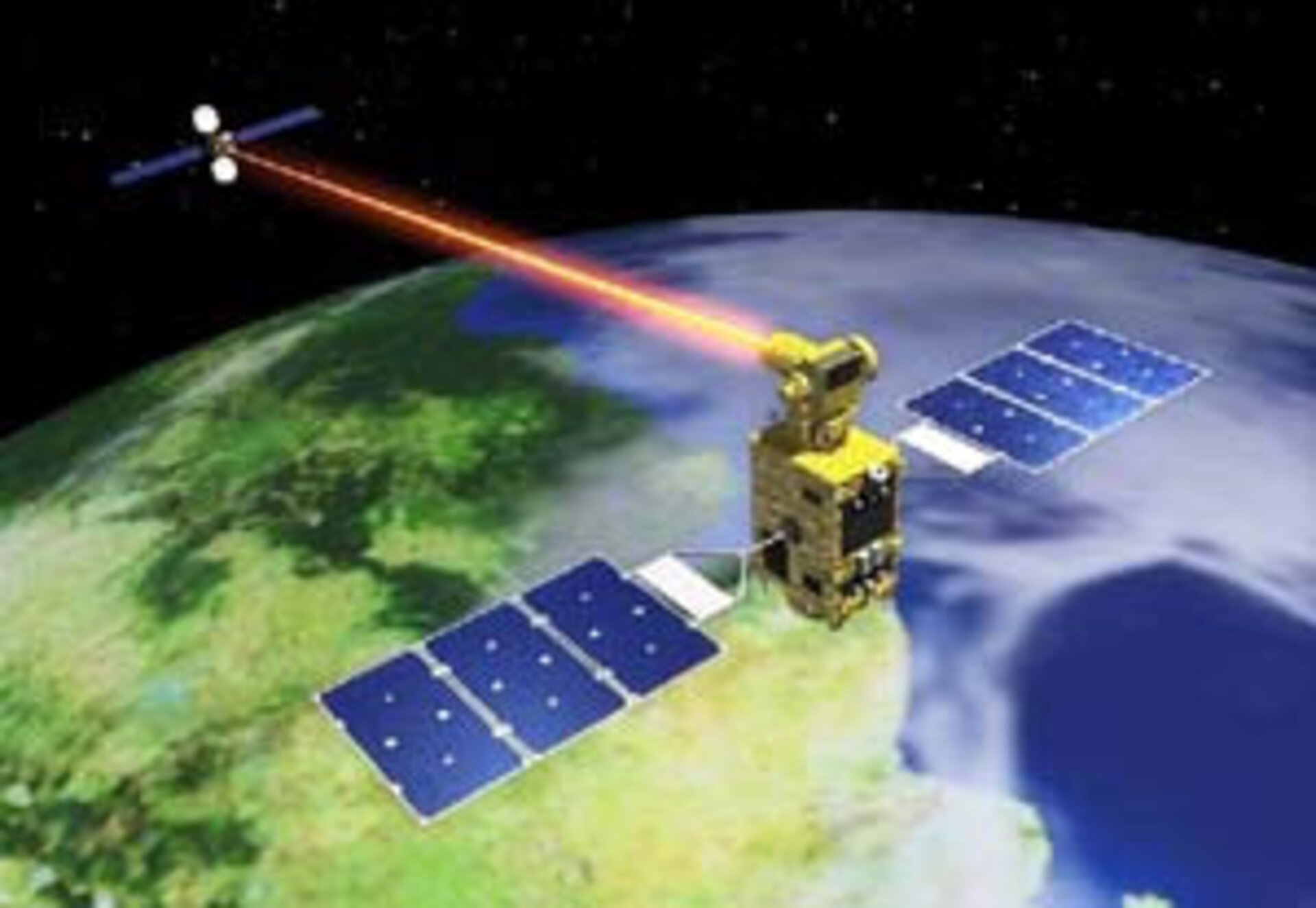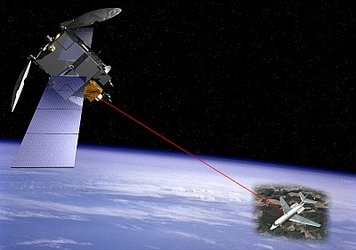ARTEMIS successfully concludes tests with Japanese Space Agency
Year-long tests between ARTEMIS and the Japanese Space Agency's Kirari (formerly OICETS) have recently concluded, representing the first optical interoperability between two space agencies.
The culmination of several years of co-operation between ESA and JAXA (Japan Aerospace Exploration Agency) in the area of data relay and free-space optical communication, the tests were designed to perform a comprehensive assessment of the performances of the two optical terminals installed on Kirari and ARTEMIS, named LUCE and OPALE respectively.
Following the launch of Kirari in August 2005, the first optical link between the two satellites was established on 9 December that year. All subsequent links have been successful, with very short acquisition times and excellent tracking performances. These links were constantly being measured for the approximately 15 hours of experiments. Amongst the major achievements of these tests, LUCE and OPALE used for the first time bidirectional optical links at the full data rates, completely qualifying and characterising the respective technologies.
The ARTEMIS/Kirari tests were the result of a long standing agreement between JAXA and ESA to extend cooperation on data relay services and build upon the optical data relay development. The successful completion of these experiments is a further demonstration of the value of international cooperation and the excellent relationship between ESA and JAXA. It is the first demonstration of interoperability between agencies using an optical link and augers well for continued cooperation in the fields of data relay and technology.
ESA has continued to develop optical technology in Europe under its ARTES (Advanced Research in Telecommunications Systems) technology programme to prepare the grounds for a new generation of lighter and more powerful optical terminals, and JAXA also intends to pursue this technology further in their future satellite projects. ARTEMIS is ESA’s Data Relay Satellite and currently supports Earth Observation satellites with daily links via its communication payload antennae and the optical laser terminal. ESA is currently investigating the possibility of flying optical data relay terminals of the newest generation within one of its telecommunication satellite programmes.
Optical relay technology
Optical technology has several advantages for data relay applications, including the ability to provide high data rates with low mass, low power terminals, combined with secure, interference-free communications. Earth observation, telecommunications services, science applications and space operations can all benefit from this new way of transmitting data around our planet.

ARTEMIS established its first laser link with SPOT-4 in November 2001 in the framework of the SILEX development, an innovative payload which provides a laser beam as a data signal carrier. This optical service has operated regularly since then and accumulated more than 1100 links totalling 230 hours to date.
ARTEMIS
ESA's Advanced Relay and Technology Mission (ARTEMIS) carries payloads for the demonstration and promotion of advanced technologies and services, in particular data relay, land mobile communications and navigation.

Since the start of operations in April 2003, ARTEMIS has provided an operational data relay service to ENVISAT (ESA's large earth observation platform) using a radio frequency link. ENVISAT now uses ARTEMIS on a daily basis for more than two-thirds of its science data transfer to ground.
SILEX, which was developed by EADS-Astrium (Toulouse) as prime contractor, and funded partly under the ARTEMIS programme, operates two terminals (OPALE on ARTEMIS and PASTEL on SPOT-4) at a wavelength of 800 nanometres using direct detection principles.
The optical links with Kirari carried data at 50 Mbps in the return direction from Kirari stationed in low earth orbit at an altitude of about 600 km, and ARTEMIS, and 2 Mbps in the forward direction between ARTEMIS and Kirari. The transmissions through ARTEMIS were linked to the ESA ground station at Redu, Belgium, which was connected via terrestrial data links to the Kirari control centre in Tsukuba, Japan.
JAXA has prepared a brochure in English and Japanese on Kirari (OICETS) – see link in right-hand navigation menu.






